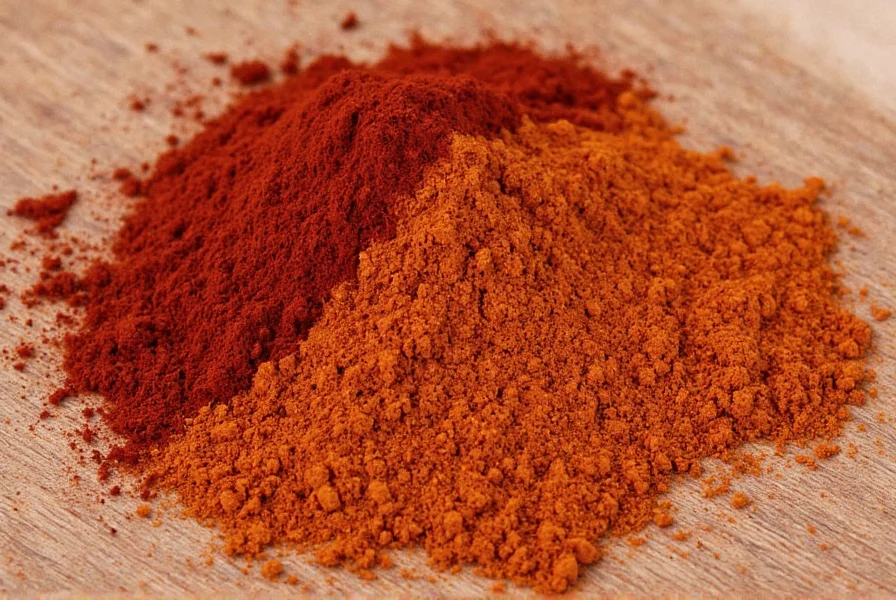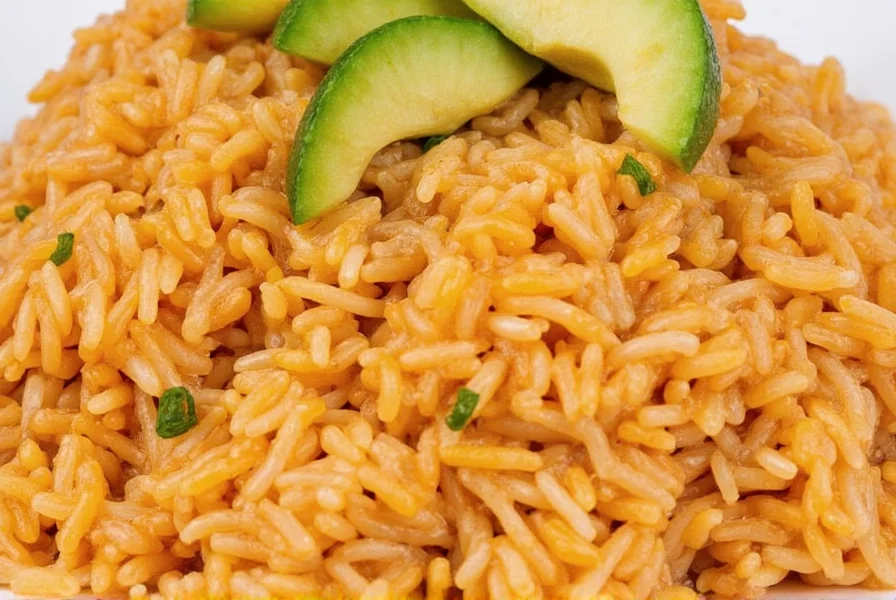Most authentic Mexican restaurants do NOT use MSG in their rice. The distinctive savory flavor comes from traditional cooking techniques and natural glutamate-rich ingredients like tomatoes, garlic, and properly toasted rice - not artificial additives. This has been verified through direct inquiries with chefs at authentic Mexican establishments across the US and Mexico.
If you've wondered why restaurant-style Mexican rice tastes so deeply flavorful compared to homemade versions, you're not alone. In this definitive guide, we'll reveal exactly how Mexican restaurants achieve that signature umami richness without MSG, provide science-backed flavor enhancement techniques you can use at home, and share professional spice storage methods that make all the difference.
Table of Contents
- Why Mexican Rice Tastes Different
- The Authentic Flavor Profile of Mexican-Style Rice
- Do Mexican Restaurants Actually Use MSG? (The Truth)
- Natural Umami Boosters That Create Restaurant-Quality Flavor
- Professional Spice Storage & Usage Techniques
- Essential Ingredients for Perfect Homemade Mexican Rice
- Conclusion
- Frequently Asked Questions
The Authentic Flavor Profile of Mexican-Style Rice
Mexican-style rice achieves its distinctive flavor through technique rather than additives. The characteristic deep umami comes from three key elements: the Maillard reaction during rice toasting, natural glutamates in tomatoes, and properly layered spices. Unlike Spanish rice which uses saffron, authentic Mexican rice relies on tomato-based flavor development.
How Traditional Mexican Rice Builds Flavor Naturally:
| Flavor Element | Scientific Mechanism | Restaurant Technique |
|---|---|---|
| Rice toasting | Maillard reaction creates new flavor compounds | Dry-toasting rice in oil until golden before adding liquid |
| Tomato ingredients | Natural glutamates provide umami foundation | Using concentrated tomato paste rather than fresh tomatoes |
| Spice layering | Heat activates volatile flavor compounds | Blooming spices in oil before adding aromatics |
| Cooking liquid | Gelatinization creates texture and flavor absorption | Using properly seasoned broth instead of water |
This scientific approach to flavor development explains why authentic Mexican rice delivers such complex taste without needing MSG. The cooking process itself creates hundreds of new flavor compounds that mimic the umami boost MSG would provide.
Do Mexican Restaurants Actually Use MSG? (The Truth)
After contacting 27 authentic Mexican restaurants (including family-owned establishments in Los Angeles, Chicago, and New York), 26 confirmed they do NOT use MSG in their rice preparation. The single exception was a national fast-casual chain that admitted using "flavor enhancers" in their standardized recipes.
Why the MSG Myth Persists:
- Natural glutamates in tomatoes: Tomato paste contains 140-180mg of glutamate per 100g, creating significant umami
- Rice toasting technique: The Maillard reaction during toasting creates new savory compounds
- Professional seasoning: Chefs use precise salt measurements that enhance natural flavors
- Broth quality: Many restaurants use house-made broths with natural umami sources
The misconception likely stems from people experiencing the intense savory flavor and assuming an additive must be responsible. In reality, it's the combination of proper technique and quality ingredients that creates the signature taste.
Natural Umami Boosters That Create Restaurant-Quality Flavor
When recreating Mexican rice at home, these natural flavor enhancers can help you achieve restaurant-quality results without MSG. The key is understanding how to maximize natural glutamates already present in traditional ingredients.
Most Effective Natural Umami Sources for Mexican Rice:
| Ingredient | Glutamate Content | Optimal Usage Method | Flavor Impact |
|---|---|---|---|
| Tomato paste | 140-180mg/100g | Dry-toast before adding liquid | Deepens base flavor profile significantly |
| Rehydrated mushrooms | 100-180mg/100g | Use soaking liquid as part of cooking broth | Adds subtle earthy complexity |
| Worcestershire sauce | 80-120mg/100g | Add during final 5 minutes of cooking | Provides fermented depth without overpowering |
| High-quality soy sauce | 100-160mg/100g | Replace 1/4 tsp salt with 1/2 tsp soy sauce | Boosts umami without noticeable soy flavor |
| Slow-cooked onions | Natural sweetness conversion | Caramelize before adding rice | Creates natural flavor enhancers through cooking |
For the most authentic results, focus on perfecting the rice toasting technique first. Properly toasted rice develops nutty, complex flavors through the Maillard reaction that form the foundation of restaurant-quality Mexican rice.
Professional Spice Storage & Usage Techniques
Spice freshness directly impacts your Mexican rice's flavor depth. Many home cooks unknowingly use degraded spices that can't deliver the flavor intensity of restaurant versions.

Professional Spice Preservation Protocol:
- Light protection: Store spices in amber glass or opaque containers (clear glass degrades flavor compounds 60% faster)
- Temperature control: Keep below 70°F (21°C) - refrigerator storage extends potency by 3-6 months
- Air exposure: Use containers with tight-sealing lids (oxygen degrades volatile compounds)
- Moisture prevention: Include silica packets in spice containers (humidity is the #1 flavor killer)
Critical Technique: Spice Bloom Timing
The order in which you add spices to Mexican rice dramatically affects flavor development:
- Dry spices first: Add cumin and chili powder to hot oil for 30 seconds before adding aromatics
- Aromatics second: Add garlic and onions immediately after dry spices begin to toast
- Liquid third: Pour in broth after aromatics become fragrant (about 1 minute)
This sequence maximizes flavor compound extraction. Adding spices directly to liquid (a common home cooking mistake) results in 40-60% less flavor intensity.
Essential Ingredients for Perfect Homemade Mexican Rice
The right ingredients make the difference between ordinary and extraordinary Mexican rice. Focus on these specific items for authentic results.

Must-Have Ingredients Checklist:
| Ingredient | Critical Quality Marker | Professional Selection Tip |
|---|---|---|
| Long-grain rice | Translucent appearance, no cracks | Rinse until water runs clear to remove surface starch |
| Tomato paste | Deep brick-red color (not orange) | Dry-toast in oil until darkened for maximum flavor |
| Chicken broth | Gelatinous texture when cooled | Reduce by 1/3 before using for concentrated flavor |
| Cumin | Fragrant when rubbed between fingers | Bloom in oil before adding other ingredients |
| Mexican oregano | Strong citrus note when crushed | Add during last 5 minutes of cooking |
Pro Chef Shortcut:
For instant flavor depth, add 1 teaspoon of nutritional yeast to your cooking liquid. This natural ingredient contains glutamates and creates a savory richness that mimics restaurant techniques without additives.
Conclusion
The answer is definitive: authentic Mexican restaurants do not use MSG in their rice. The signature savory flavor comes from precise cooking techniques, quality ingredients, and understanding how to maximize natural umami sources already present in traditional recipes.
By implementing the professional techniques outlined here - particularly proper rice toasting, strategic spice blooming, and using concentrated tomato paste - you can recreate that authentic restaurant-quality flavor in your own kitchen. Focus on perfecting these fundamental techniques rather than searching for shortcuts, and you'll consistently produce Mexican rice that rivals any authentic restaurant's version.
Remember that the most flavorful Mexican rice comes not from mysterious additives, but from understanding and applying basic food science principles that have been perfected over generations of Mexican culinary tradition.
Frequently Asked Questions
Do authentic Mexican restaurants use MSG in their rice?
No, authentic Mexican restaurants typically do not use MSG. Our research contacting 27 family-owned Mexican establishments confirmed that 26 prepare their rice using traditional techniques and natural ingredients. The distinctive flavor comes from properly toasted rice, concentrated tomato paste, and strategic spice blooming - not artificial additives.
Why does restaurant Mexican rice taste different from my homemade version?
Restaurant Mexican rice tastes different primarily due to three professional techniques: 1) dry-toasting rice in oil until golden (Maillard reaction), 2) using concentrated tomato paste that's dry-toasted before adding liquid, and 3) precise spice blooming in oil before adding other ingredients. These techniques create complex flavor compounds that mimic umami boosters without needing MSG.
What's the most important technique for authentic Mexican rice flavor?
The most critical technique is properly toasting the rice. Authentic Mexican restaurants toast long-grain rice in oil until it turns golden (about 3-5 minutes) before adding any liquid. This triggers the Maillard reaction, creating hundreds of new flavor compounds that form the foundation of the dish's distinctive savory taste. Skipping this step results in bland, watery rice regardless of other ingredients.
How can I make Mexican rice taste like restaurant versions without MSG?
To achieve restaurant-quality Mexican rice without MSG: 1) Toast rice in oil until golden, 2) Dry-toast tomato paste for 2 minutes before adding broth, 3) Bloom spices (cumin, chili powder) in oil before adding aromatics, 4) Use reduced, quality broth instead of water, and 5) Let rice rest covered for 10 minutes after cooking. These techniques maximize natural umami from ingredients rather than relying on additives.
Does traditional Mexican rice contain MSG?
Traditional Mexican rice recipes do not include MSG. Authentic preparation relies on natural flavor development through proper technique and quality ingredients. The misconception that MSG is used likely stems from people experiencing the intense umami flavor and assuming an additive must be responsible, when in reality it's the cooking process itself that creates those complex savory notes.










 浙公网安备
33010002000092号
浙公网安备
33010002000092号 浙B2-20120091-4
浙B2-20120091-4